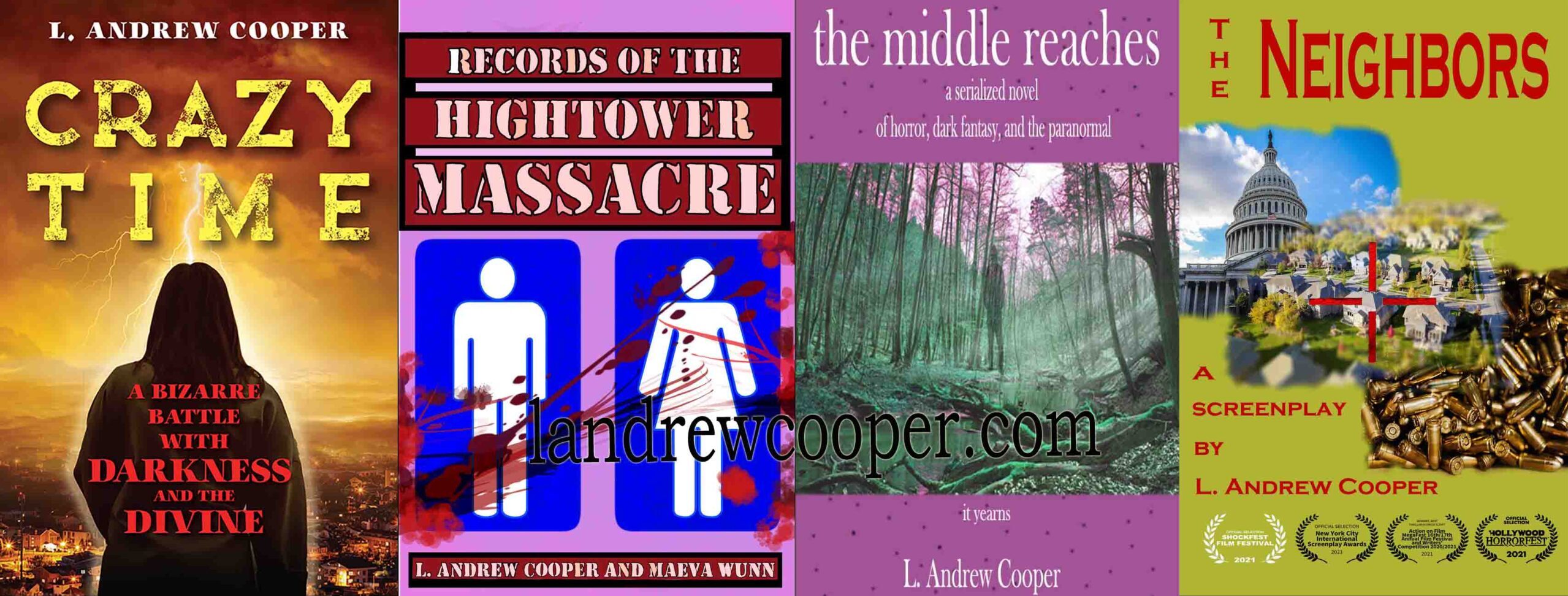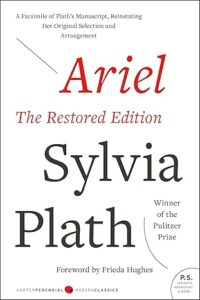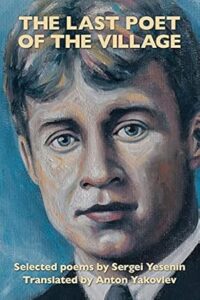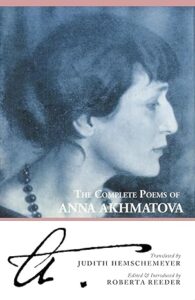Interview with Poet and Storyteller Grace R. Reynolds: Lady of the House and The Lies We Weave (2024)
Grace R. Reynolds is a superb spinner of verse, and here she reflects on the influences, inspirations, histories, and circumstances that help form the webs in her collections Lady of the House and The Lies We Weave.
Lady of the House
Lady of the House shares the fictional tale of Lady, a 1940s riveter turned housewife trapped by a loveless marriage and societal framework that make it difficult for her to abandon her current circumstances. She feels purposeless, hopeless, and she is angry. Resentful. And she festers…. This dark and haunted poetry collection is sure to please readers of the macabre.
The Lies We Weave
Planted ambitions. Wounds that never heal. Cycles of generational trauma that keep us from breaking free of our turmoil. Suffused with Gothic undertones, The Lies We Weave’s collection of dark poetry and prose is a journey of self-discovery that offers a unique perspective on one woman’s path toward healing. Beauty, darkness, pain, and hope can be found along the way as long as we allow ourselves to take those first steps into the unknown.
The Interview
1. Gothic Poetry. The descriptions (above) of Lady of the House and The Lies We Weave include “dark,” “haunted,” “macabre,” and finally the big-G “Gothic.” What earns your work all these descriptors, and what draws you to the dark side? Classic G is rich with images of festering and decay and filled with repressed longing (sometimes for violence)—do you consciously draw on this tradition, or do you get your macabre imagery elsewhere? Do you have any major Gothic/dark influences, poetry or prose? What kinds of darkness is poetry particularly useful for expressing? In either book, of what image or images are you proudest? You have a flair for synesthesia, such as “the grass smells / a particular shade of green” in “The Fresh Cut.” What draws you to this technique, often favored by the Romantics and others in the genealogy of Gothic poetry?
GRR: I enjoy the rich history of Gothic literature and its haunted hallways, and I mourn its broken heart like an unrequited lover staring out a castle turret pensively. It’s tragic, romantic, sad, and beautiful. I’ve been drawn to the genre for a long time, but funnily enough, I did not consciously draw on tradition when writing both Lady of the House and The Lies We Weave. Though they are both contemporary Gothic works, they employ different elements of the genre and evoke different feelings. Lady of the House falls somewhere in the Venn diagram of American Gothic, Suburban Gothic, and Neo-Feminist Gothic. The Lies We Weave explores common themes found in Neo-Feminist Gothic thought, particularly around women’s roles and expectations within family structures and how one might free oneself from fears and anxieties associated with that.
I find myself drawn to authors who write similar themes. Sylvia Plath was my first and still a favorite poet. I found her post-mortem collection, Ariel, in the high school library and found myself deeply attached to her work. I am also partial to famous Russian poets such as Sergei Yesenin and Anna Ahkmatova, a Lyricist and an Acmeist. Two very different styles, yet equally rich, dark, and expressive in their own ways. I enjoy how both Western poets such as Plath and Eastern European Poets like Yesenin and Ahkmatova can look at small moments in life and paint something utterly beautiful or terrible from them. However, Acmeists like Ahkmatova speak more plainly, which is not something you find too much of in either collection, as both are steeped in metaphor and analogy.
Apart from poets of the 19th and 20th centuries, I’ve come to enjoy Shirley Jackson as a more recent influence of mine. Perhaps I feel a sense of comradery while reading her work, as she and I share a few parallels in life, notably seeing the terrors hidden within the everyday mundane. Sometimes I feel like Constance Blackwood or Natalie Waite’s voices were inside my head all along.
With respect to contemporary poetry, I’ve come to adore Ada Limón’s work. She is the 24th Poet Laureate of the United States, and I find her voice refreshing, authentic, and inspiring. I came to know her through her collections The Hurting Kind and The Carrying, which address existential questions of being connected to everything to hard topics to share such as struggles with fertility. She’s raw. She’s real.
Going back to your question on favorite images produced in each collection, that’s a tough one! I suppose they would be based on my greatest fears manifested in both (though I am very partial to “Ambrosia” in Lady of the House). The opening poem in my freshman collection is still a favorite of mine because I relish the look on readers’ faces when faced with the imagery of Lady plunging her hand down the garbage disposal. It’s a very real fear and an intrusive thought of mine! In The Lies We Weave, my fears revolve around parenthood and doing right by my children. So, while not dark or terrifying by the horror reader’s measure, I’d say my favorite image rendered is the one made for “Where Fireflies Dance” because it acknowledges those fears as a parent but lets them go and ends on a hopeful note.
2. A Woman’s Voice I: Prisoners of Patriarchy. Thinking of the historical Gothic, I’d say Lady of the House is more G than The Lies We Weave. Though both books earn the G, the central image of a woman trapped by patriarchy in Lady has been crucial to the G since its origins in the imprisoned women of Ann Radcliffe and Mary Wollstonecraft (feminist mother of Mary Shelley), or, later, the famous “madwoman in the attic” of Charlotte Brontë’s Jane Eyre. Is Lady a paradigmatic victim of patriarchy for her times? What examples can you give of what her thoughts and desires reveal about her experience as a woman and the experiences of women in general, in the 1940s and beyond? You reflect on “The trauma of a life wasted / Built on a foundation of suburban lawns.” Would you call your writing here Feminist Suburban Gothic? Why or why not?
GRR: The Lady is a paradigmatic victim of her time; yes. You have to imagine in the 1940s, over 7 million women in the United States were in the workforce, a 6% jump in participation in labor from before the war. After victory day, less than 50% of women who were new hires for jobs were let go from their positions, and the effects only continued to ripple. It was as if there was a crisis of gender roles in this country where women continued to be pushed back into traditional gender roles. The pendulum swung hard to the other side, and unfortunately, we see similar behavior happening today in the aftermath of COVID. Since 2020, it’s estimated that about 2 million women have left the traditional workforce, myself included, to take on a caretaker role for children, parents, or another family member in the home.
For women who found a greater sense of purpose outside the role of caretaker or homemaker, this would have felt incredibly isolating. The birth population skyrocketed in an era when married women had very little, if any, control over their fertility. The physical labor of being a caretaker and a homemaker takes its toll, and in the 1940s and 1950s, when housewives complained, they were diagnosed with ‘angry woman syndrome’ and overmedicated as a result.
The Lady is a privileged and disenfranchised paradox as a disgruntled homemaker in this era. I think there are elements of Suburban Gothic present in Lady of the House, but Feminist Gothic is more apparent with themes of domesticity, entrapment, and sexuality, and the question of identity is at the forefront.
3. Recipes for Violence. One of the oddest and most appealing elements in Lady of the House is the inclusion of poems that start with recipes, some of which seem like mere recipes, some of which have some special details. Where is the poetry in a recipe? How, especially in Lady’s era, did/do recipes relate to women’s family and community relationships? What might someone gain from a life filled with recipes? What might someone lose? Why do the details unrelated to typical cooking find their way in? The poem “Ambrosia” includes a detail about eyes that the woman in the poem wishes were her husband’s, one of many anti-husband fantasies, which is probably why your husband asked you to mention that he’s alive in the Acknowledgements. Larger issues of patriarchy aside, what fuels the anti-husband resentment and rage in your writing?
GRR: On the subject of the disenfranchised, let’s talk about witches… recipes are the kitchen witch’s spells. She bakes and brews her heart’s delights or malicious intent, so who’s to say why some of Lady’s unique ‘recipes’ wouldn’t have some interesting details in them? Recipes, like spells, can be passed down the generations, and with them come tales of joy, sorrow, wisdom, and power. As someone who values family history, that sort of loss would be extraordinary.
Every family has one or two recipes or has a family member with a recipe that omits one or two ingredients. “Secret ingredients” or, if you’re lucky and somehow get your hands on a copy of the recipe, those extra ingredients change each time. The unrelated details are a nod to that, but on a more serious note, a nod to the deteriorating mental state of the Lady.
I enjoy the aesthetic of the post-World War II era. It’s beautiful, but it’s important to note that it was a veneer for many. The ‘Mad Housewife’ trope emerges, and horror legends like Ira Levin notably capitalize on these terrors. I wanted to examine that from my own perspective as a woman. Why’d she go mad in the first place? Let’s get into the thick of it, reclaim the trope, and give her a sense of dignity and an ending she deserves instead of making fun of her.
4. Trauma I: Bad Breaks. In Lady of the House, you mention trauma directly both in the Introduction and in the poetry. What, in general, does this book say about trauma, and what traumas in particular do you evoke and examine? Loss of self, or the smothering of self, seems to be a specific concern. Where do these emotions originate, and what happens when they fester? In “Groundswell,” the poem’s perspective character repeatedly thinks, “‘I am broken.’” Are people breakable? If so, what breaks them? If not, why do people often feel broken? Can people who are broken, or feel broken, be fixed?
GRR: There are several variables to the Lady’s existence. I don’t say where she lives or what she looks like, but the reader knows she lives in the suburbs. From that, they can assume her household’s socioeconomic status, relative location to a metropolis, access to hiring opportunities, etc. In Lady’s case, the circumstances that entrap her are financial and marital. She is only economically secure so long as she stays in her marriage because divorce was, and still is, governed by the state. It wasn’t until the 1970s that all states even allowed couples to petition ‘no-fault’ divorces, so one party would have to gather evidence that another was at fault. For someone like Lady, that would have been incredibly difficult to do. And while there was no law that outright said a woman was required to obtain permission from her husband to seek employment outside the home, there was nothing stopping a husband from intervening with said prospective employer. Businesses were free to discriminate against the female sex for hiring practices until the Civil Rights Act of 1964. But I digress— A person can feel broken, break, or be fixed through therapeutic measures or something else.
5. Form I: Sound. In Lady of the House, you use rhyme a great deal more than you do in The Lies We Weave. What do you like about rhyme, particularly the closing couplet? For example, two closing couplets, almost like bookends, rhyme “bloom” with “groom;” the first “bloom” is the bloom of resentment, and the second is the bloom of the groom’s spurting blood. What effect do you hope this repetition of sounds and associated images and concepts achieves? Why do you back away from such techniques in The Lies We Weave? You tend to use forms of your own—what don’t you like about rhyme, or traditional poetic forms that involve regular sound repetitions? How much emphasis do you place on meter?
GRR: Meter is essential, but I do not follow traditional poetic form if that is what you are asking. Contemporary poetry does not follow a predetermined meter or rhyme scheme. Lady of the House does include a great deal of rhyme! I wanted to stick with that “tongue in cheek” feel in the collection and stay with a lyricist mindset, apart from the concrete poems of the Lady’s internal monologue in “Nickel Finish” and “Nightmare.” Even with the gory imagery, the use of a rhyme scheme makes the poetry fun! How can you not love the imagery of a glass of tea juxtaposed with the Man of the House’s foot severed off in the front lawn under the push mower in “Lemon Wedge & Sun Tea?”
In The Lies We Weave, I wanted to experiment with free-form poetry and create a cohesive collection that honored older poems I had drafted, like “In The Full Bloom,” with newer ones. Thinking back on it now, I suppose that poem is the cornerstone of the entire collection. I did not intend to write a book of poetry about motherhood or trauma, but somehow, the pieces came together. Huh. How about that?
6. Form II: Shape. In both Lady of the House and The Lies We Weave, but I think more strikingly in The Lies We Weave, you include poems with concrete forms, which is to say the words are positioned on the page in ways that form visual images (though the images themselves are fairly abstract). How do you know when the words of a poem need to form a visual image? A pattern repeats—narrow at the top, wide about a third of the way down, narrow half to two-thirds of the way down, wide again at bottom. Do you have specific pictures, feelings, or ideas that you want readers to take from such images? Words and phrases also tend to drift from the left side of the page to the right. How should readers respond to the verbal drifts?
GRR: Words have weight, emotional weight. When creating an abstract form, the line break matters to me. In “Dimensions of Truth,” I let the words drift, allowing the reader to slow down as they approach the edge of the stanza. I’m not saying my way is right or wrong, but it is my intention. Perhaps that is what I enjoyed most about crafting this collection.
7. The Void. Speaking of drift, The Lies We Weave begins with “Dimensions of Truth,” a poem in which the speaker’s spirit seems to drift through the universe until being swallowed by the void. Voids, chasms, abysms, the abyss… they come up a few times in this collection. Why? What is the Void? What are its attractions? What are its horrors? What is your relationship with it?
GRR: The void makes one or two sneaky appearances in Lady of the House, too, if I remember correctly. Your guess may be as good as mine, as I am still searching for this answer! ‘The Void’ is a concept I am called to quite often in my work, mainly when writing poetry. So much of my writing up to date has centered ugly feelings that feel all consuming–perhaps emptying them into a void is what I really want. To just turn off all the noise. That sounds rather bleak, doesn’t it? Or rather, cathartic, perhaps? Yet, I can’t help but equate it with the idea of ‘peace.’
8. A Woman’s Voice II: Equivocal Tongues. The second poem in The Lies We Weave, “The Weaver,” includes one of my favorite images from either book, a spider laying eggs in the speaker’s mouth. It ends with the lines, “I must be careful not to disturb them / with my tongue.” Since the title associates weaving with lies, the mouth and the tongue, and by extension the voice, seem to have a different relationship with repression and freedom in this book. They’re more ambivalent, as the mouth is equipped to weave lies, lies that could support or undermine survival if the tongue allows them. In this collection, what is the significance of weaving lies, especially for women? Your Introduction casts lies in a negative light, but I’m not sure about the rest of the book. Are lies ever necessary or productive? What is the status of lying in a life where truth itself is elusive?
GRR: I love these questions; thank you for asking them. The symbol of the spider is significant, not just for the collection, but to me! Spiders represent the divine feminine, as they are the architects of life. There is a duality to their nature, creating beautiful one-of-a-kind webs that cannot be recreated in one moment to attack an unsuspecting moth and the next to liquefy its insides. Women are spoon-fed lies from an early age, so it’s hard to know where they begin and where they end. In the movie Barbie, America Ferrera’s character, Gloria, tells a fantastic monologue about the impossible standards women and girls should fulfill. This mentality is harmful to young women and carries into adulthood.
This world is violent and uncertain. It’s a wonder we all get out of bed in the morning every day! Think about the little lies, or rather, the omissions you allow yourself throughout the day. What news articles do you intentionally skip because the truth is too hard to face? What text message are you ignoring right now because you told yourself you’ll get back to it but never will because a little voice in your head says it’s easier not to—I’m rambling there, but what I want to illustrate is the brain’s methodology of using omissions, or lies, as a multifaceted means to avoid confrontation of anything negative because it is in direct conflict with our survival (at least in a contemporary setting in a world of screens). And if that is the case, what is the status of truth in a world where lies are more concrete, foundational even?
9. Trauma II: Generational Contagion. The Lies We Weave follows several themes, but a major arc moves from poems with speakers reflecting on traumas handed down from their mothers to poems with speakers reflecting on their anxiety about handing down traumas to their daughters. Is trauma contagious? Hereditary? Matrilineal? Is trauma, the realm of the wound, more feminine than masculine? Why or why not? Does family psychology more or less guarantee the sharing of traumas? Why or why not? How much does the generational transmission of trauma that you describe have to do with the “Preference for Hurt” that doesn’t just come up in the poem of that name?
GRR: I believe trauma is hereditary but not exclusive to matrilineal lineage. I’ve never thought about the realm of the wound being more feminine or masculine, but I think it is more commonly associated with the feminine. This is most likely due to the roles often associated with femininity, with motherhood at the forefront. The role of caretakers, not specifically mothers, is another. Regardless of gender, unresolved trauma is a wound that festers and rears its ugliness on those we love most. Like a blade, it burrows deeper into the soul of a family with every passing generation. As parents, it’s our job to recognize how and where familial trauma manifests for ourselves so we, in turn, don’t project or expose our own children to that.
10. Access! How can readers learn more about you and your works (please provide any links you want to share)?
GRR: Readers can connect with me on social media on Instagram, X (formerly known as Twitter) or Threads under the handle @spillinggrace, or visit my website www.spillinggrace.com
About the Author
Grace R. Reynolds is a native of southern New Jersey, where she was first introduced to the eerie and strange thanks to local urban legends of a devil creeping through the Pine Barrens. Since then, her curiosity with things that go bump in the night bloomed into creative expression as a dark poet, horror, and thriller fiction writer. Her short fiction and poetry have been published by various presses. She is the author of two poetry collections from Curious Corvid Publishing, Lady of the House (2022) and The Lies We Weave (2023). Connect with her on Instagram, Threads, and X @spillinggrace








